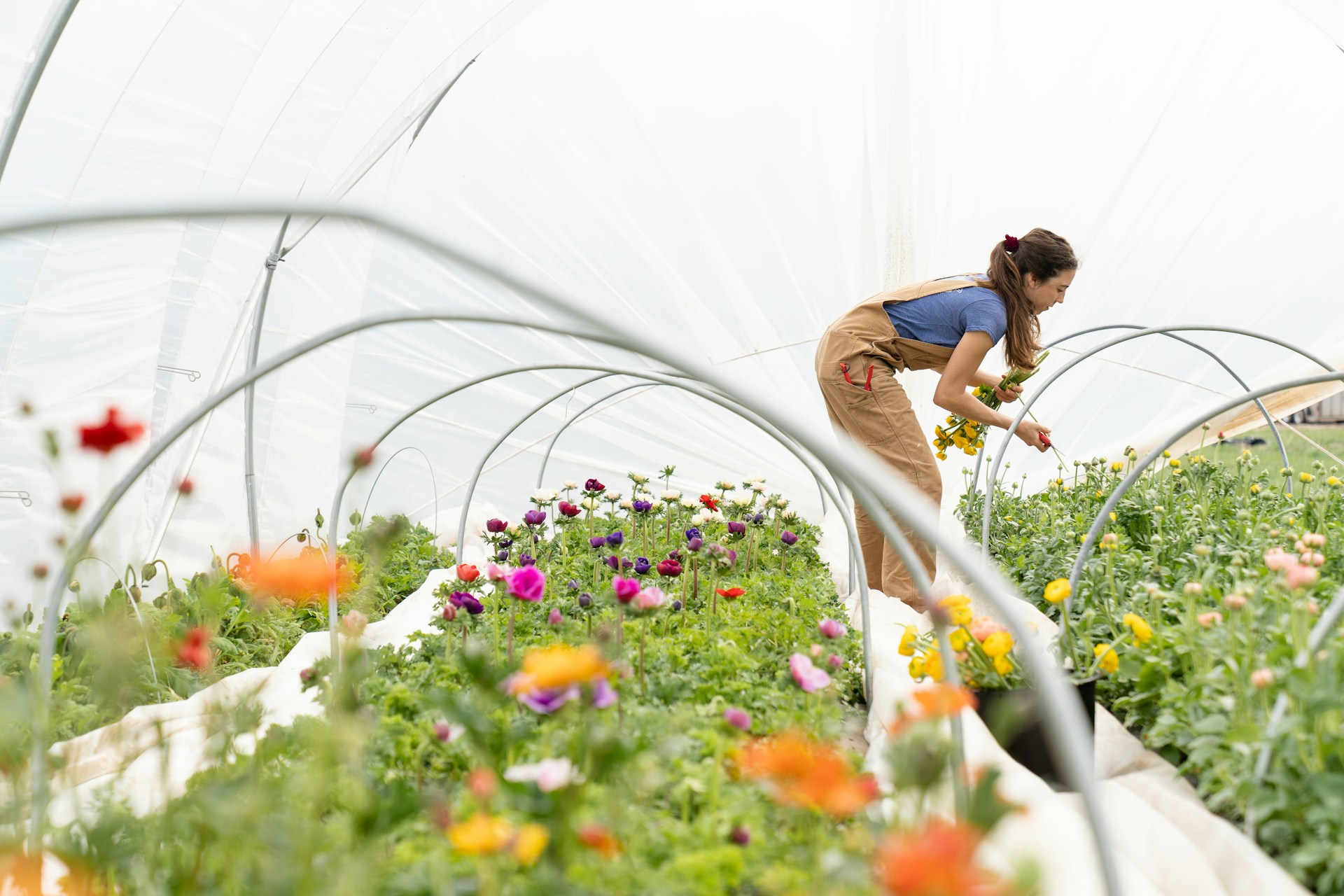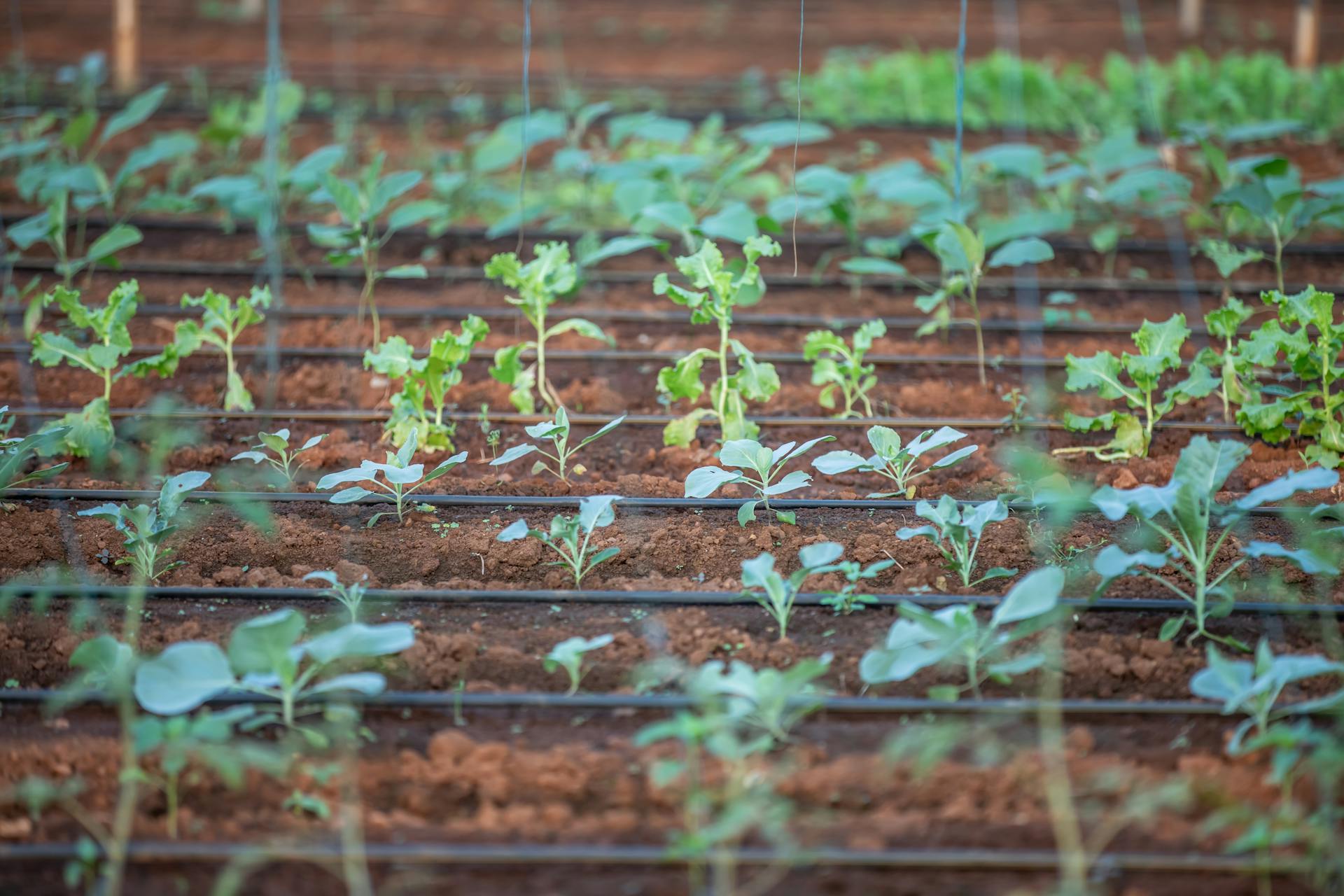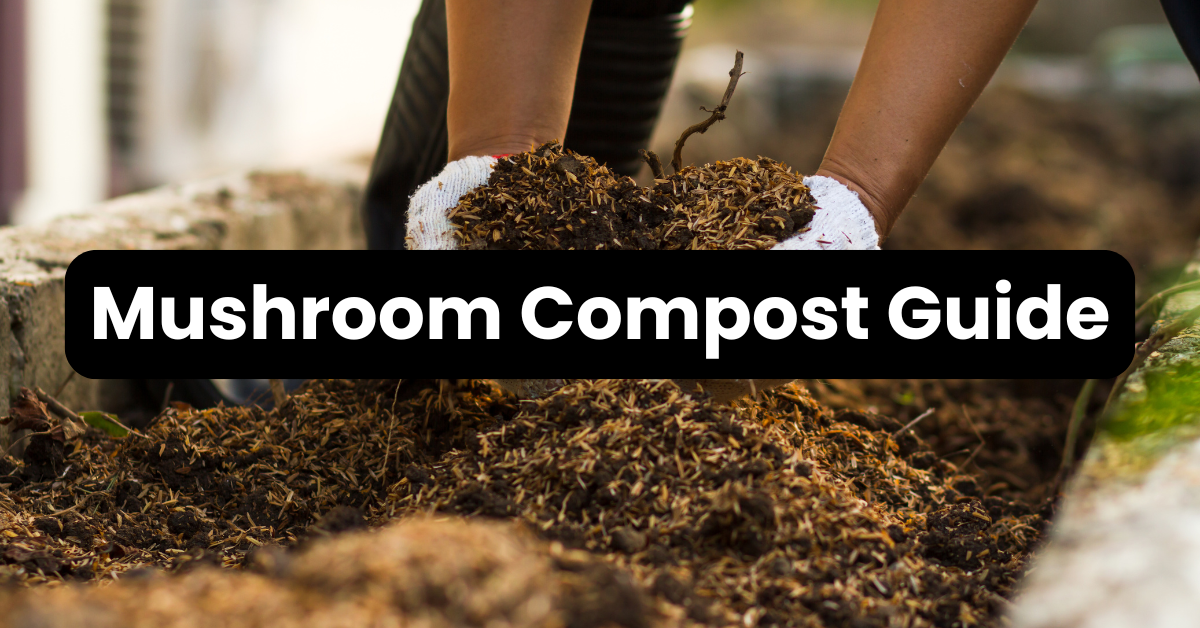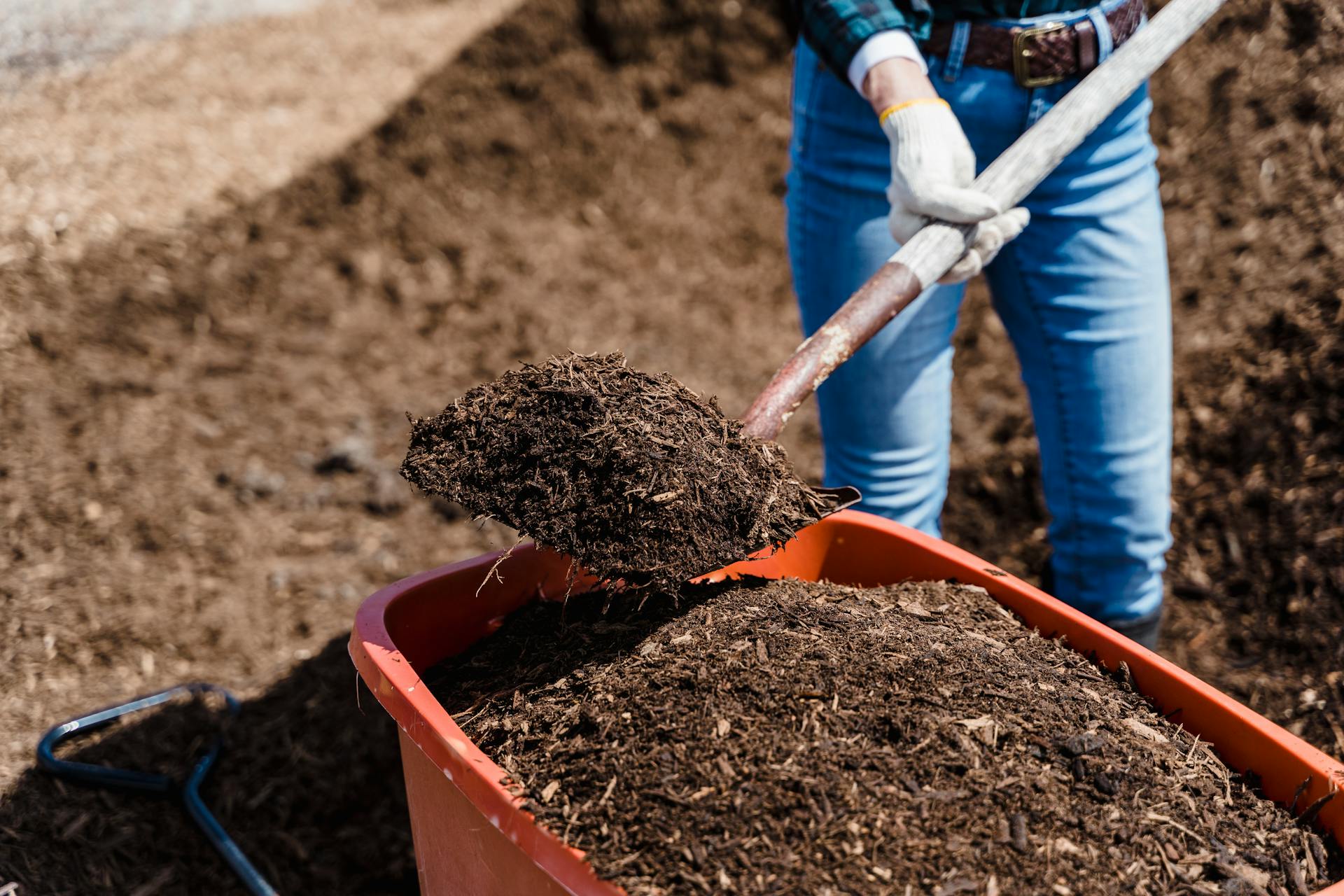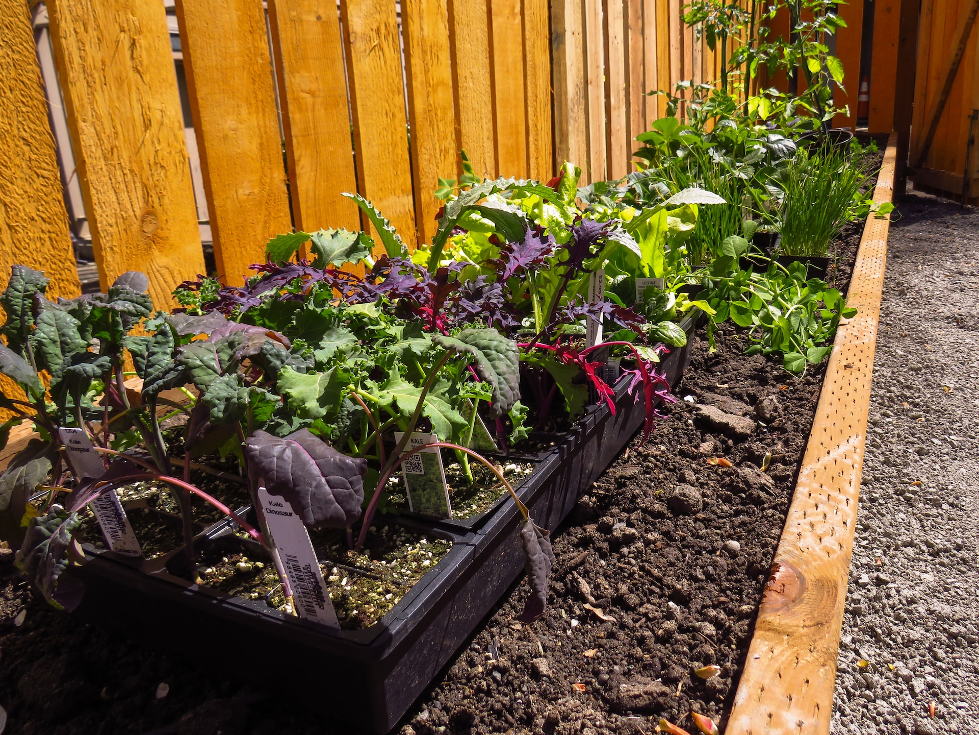Wouldn’t it be nice to extend your growing season and enjoy cold-hearty vegetables just a little bit longer this year? With the right raised garden bed cover, you can do just that.
But what type of cover should you choose? And do you really need one in your vegetable garden?
Let’s explore all of the benefits and possibilities that a raised bed hoop house offers.
Do You Really Need a Raised Garden Bed Cover?
Technically, you don’t need to cover your raised bed in the winter. If you plan to hang up your gardening tools in the fall, then you may not need to go the extra mile to cover your beds.
A simple 3-inch layer of mulch is all you need to help insulate the soil, prevent weed germination and add more nutrients to the soil.
But if you’d like to get more out of your gardening season, adding protective covers is a smart idea.
What are the Benefits of Protective Covers?
Protective covers make your raised beds more versatile and can offer a number of benefits throughout the year (not just winter!).
Extend Your Growing Season
Of course, the biggest advantage of adding protective covers to your bed is that you can extend your growing season.
Depending on your zone, you may be able to extend the season by up to two months. According to WVU, row covers (which you can easily use in your raised garden) offer protection down to 24 to 28 F while still being air, water and light permeable.
Why? A raised bed cover will transform your bed into a miniature greenhouse, protecting it from cold weather and preventing frost damage to plants.
That extra cold protection may allow you to start gardening a little earlier in the spring and continue growing until late fall or early winter.
Protection from Critters and Insect Damage
Have you ever transplanted fragile seedlings only to have them devoured by critters or insects? Greens are especially vulnerable to damage and seem to be a favorite treat for deer, rabbit and other animals.
Adding plastic or mesh covers to your garden can help protect delicate plants that are in the early stages of growth and keep critters out of your garden.
Just be mindful that some forms of netting can be deadly for some critters (more on this below).
Even if critters aren’t a concern, covers can protect your beds from pets. We all love Fido, but we’re not fans of him stomping around the garden and munching on everything in sight.
Protection from Extreme Weather
Covers offer more than just cold protection – they offer protection from extreme weather conditions, like:
- Heavy rain
- Strong winds
- Hail
High winds can damage the flowers, fruits and leaves of your plants or even uproot your crops entirely. Heavy downpours and hail can cause similar damage.
Covers offer an extra layer of protection and will take the brunt of the force from extreme weather events.
7 Types of Raised Bed Covers
There are so many types of garden covers out there, and resourceful gardeners are always sharing their creative solutions for protecting their beds.
The possibilities are endless, but these 7 types of covers are the most common and effective.
1. Netting
Garden netting is one of the simplest solutions for protecting your beds from critters. Fine mesh nets can also help insulate your beds to keep the soil warmer for longer.
Make sure your netting is wildlife-safe. To reduce the risk of accidents, consider the following:
- Fine mesh or netting is preferred. No holes should be big enough to poke a finger through.
- Choose a color that’s more visible, like white.
- Avoid nets or meshes that contain monofilament, as it can cut wildlife.
- Keep your netting taut and on a rigid frame, so animals cannot get wrapped in it.
2. Chicken Wire
Thanks to its flexible yet durable nature, chicken wire is a great choice for a raised bed cover. In fact, this is exactly what I used to build my DIY-on-a-tight-budget covers. 👇
You can do what I did:
- Secure 2x1s to the bed
- Wrap the chicken wire around the bed, securing it at each post
- Add outdoor-friendly screw hooks to the middle posts.
- Cut the wire at each middle post to create a “chicken wire door” of sorts.
Although this worked to keep our deer friends out of the garden, I will admit that it was a pain to work with. Getting into the beds was uncomfortable and, at times, painful.
If you don’t want to go through all of this hassle and only need to protect your fragile greens, you can lay the chicken wire over your beds.
Or you could just be smart about your design, like these folks 👇
Just keep in mind that chicken wire won’t provide any cold protection unless you pair it with greenhouse plastic.
3. Raised Bed Kits with Covers
One of the simplest options is to purchase a garden hoop kit or a garden bed with cover if you’re just establishing your garden (we love this one).
Your local nursery or home improvement store may sell kits, but you can also find them online.
These kits come with everything you need to transform your raised beds into mini hoop tunnels, including the cover frame and netting.
4. Modular Covers
If you already have an established raised bed, you can use modular covers to protect portions of the bed or the entire thing.
Some modular covers, like this one from Quictent, transform your entire bed into a mini greenhouse by building a raised frame around the bed and adding a PVC cover.
Others, like these mini greenhouse covers from Gardener’s Supply Company, only cover portions of the bed. However, you can buy multiple sets to ultimately cover the entire bed if that’s your goal.
Modular covers are great because you can remove them whenever you want or change their position in the garden with ease.
5. Frost Blankets
If you’re only concern is to protect your plants from frost, then a frost blanket may be all that you need.
The great thing about using blankets or plant covers is that it’s a DIY-friendly, affordable option. For example, you can snag this 7’ x 25’ fabric for less than $10 on Amazon, and it will protect your plants from frost.
6. Greenhouse Plastic
Greenhouse plastic is another simple and affordable option for covering raised beds. You can use it with hoops to create a small greenhouse.
Double layer poly can reduce heat loss at night by around 40%.
Most greenhouse plastics are made with polyethylene film. Look for plastics that are UV-stabilized to ensure their longevity. Otherwise, UV rays can break down the polymers in plastic, eventually causing your sheeting to become brittle and weak.
2 Things to Keep in Mind When Building or Buying a Raised Bed Hoop House
Whether you’re building or buying a raised bed hoop house (or cover), there are a few important things to keep in mind.
1. The Location of Your Raised Beds
Where are your beds located? In the cooler fall season, the sun is lower on the horizon and casts weaker rays.
If your goal is to extend your growing season, you’ll need to consider whether your beds will still get enough sunlight to support that extra growth time.
My beds, for example, are in my backyard, which faces Northwest. I get just enough sunlight to extend my growing time in the fall, but if they were even five feet closer to the house, we’d be out of luck.
If you’re not sure about how much sun you get in the fall, spend some time outdoors with your beds throughout the day.
2. Access to Your Beds
How accessible are your beds? Are they up against the fence (like mine)? Or do you have plenty of space on all sides (ideal)?
If you have some accessibility issues, you’ll need to consider whether it’s better to have a modular or hinged cover.
Adding something like chicken wire, netting or hoops all the way around your beds may not be optimal in this kind of situation. Getting into the beds may prove to be more trouble than it’s worth.
If your beds are easily accessible from all sides, however, you’re free to do whatever you want.
Raised Garden Bed Cover Ideas
Need some inspiration for your garden bed covers? Check out these ideas.
Need some inspiration for your garden bed covers? Check out these ideas.
Simple Plastic Cover
A super simple and affordable cover that’s easy to put together in a weekend.
Hinged Hoop Cover
Want a more complicated but practical option? Try your hand at making a hinged hoop cover.
Easy DIY Netting Structure
If you only want to add netting to your beds, try this simple DIY option that will easily attach to your beds.
